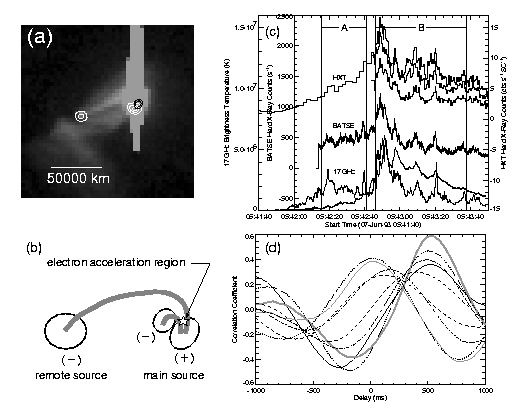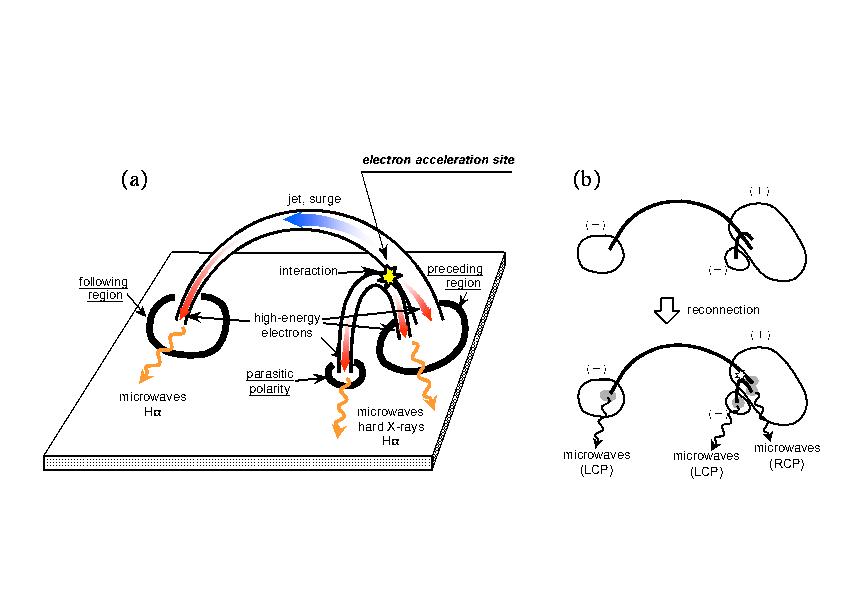High-Energy Electrons in Double-Loop Flares
We studied the fast temporal variations in the brightness of the radio
and hard X-ray sources of three double-loop flares observed with the
Nobeyama Radioheliograph, Yohkoh, and CGRO/BATSE. As shown in the
figure (a) below, in such flares, the main radio/hard X-ray source is located near
to one of the footpoints of a large overlying loop, where a small,
newly emerging loop appears and the two loops interact, and the remote
source is located at another footpoint of the large loop. Figure (b)
schematically shows the configuration of the emerging loop and the
overlying loop. The following results were obtained from the
analysis:

(Hanaoka, Publ. Astron. Soc. Japan, 51, 483, 1999.)
(a) Soft X-ray image of a double-loop flare on 7 June 1993
overlaid by white contours showing the 17 GHz radio image and black
contours showing the hard X-ray image. (b) Schematic drawing of the
flare loops. (c) Changes in the hard X-ray and microwave intensities
of the 7 June 1993 flare. (d) Relation between the assumed delay and
the correlation coefficient between two of the rapidly fluctuating
components shown in (c). The thick lines show the correlation
coefficients between the time variation of the remote source and that
of the main source, and the thin lines show the correlation
coefficients between the time variation of the main source and another
time variation of the main source.
(1) The main source and the remote source basically show a correlated
brightness fluctuation in radio and hard X-rays, but the rapid
fluctuation of the brightness of the remote source lags behind that of
the main source for about 500 ms. This result is evidence that the
electron-acceleration region is close to the main source and,
therefore, it is most presumable that the high-energy electrons in the
double-loop flares are accelerated in the interaction region of the
two loops.
(2) The brightness of the hard X-rays from the main source and that of
the microwaves from the remote source fluctuate highly, but the
microwaves from the main source fluctuate less. This result means
that the microwave-emitting electrons are effectively trapped at the
main source region.

(Hanaoka, Publ. Astron. Soc. Japan, 51, 483, 1999.)
Go back to
the HXT Image Gallery
Go back to the Yohkoh/HXT top page

